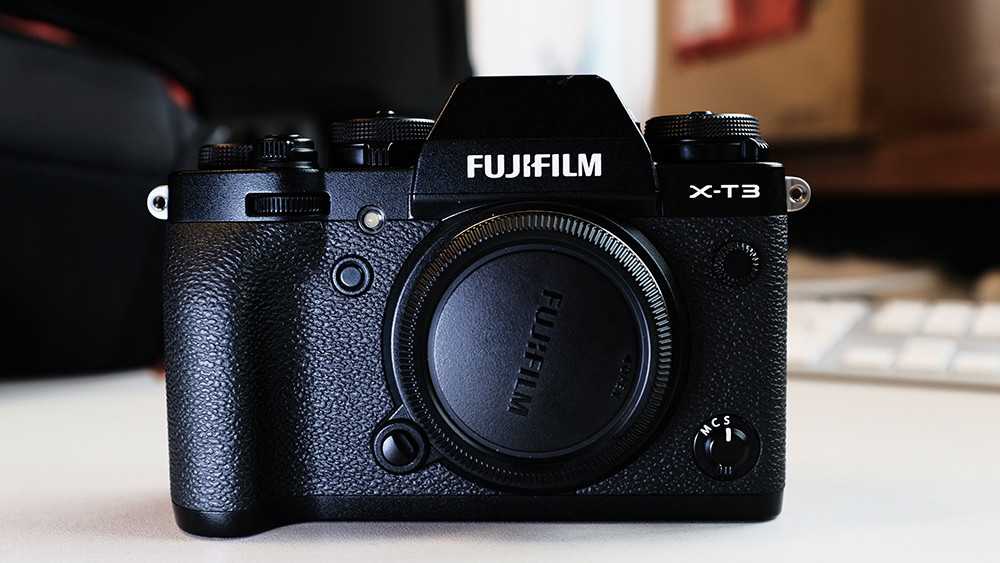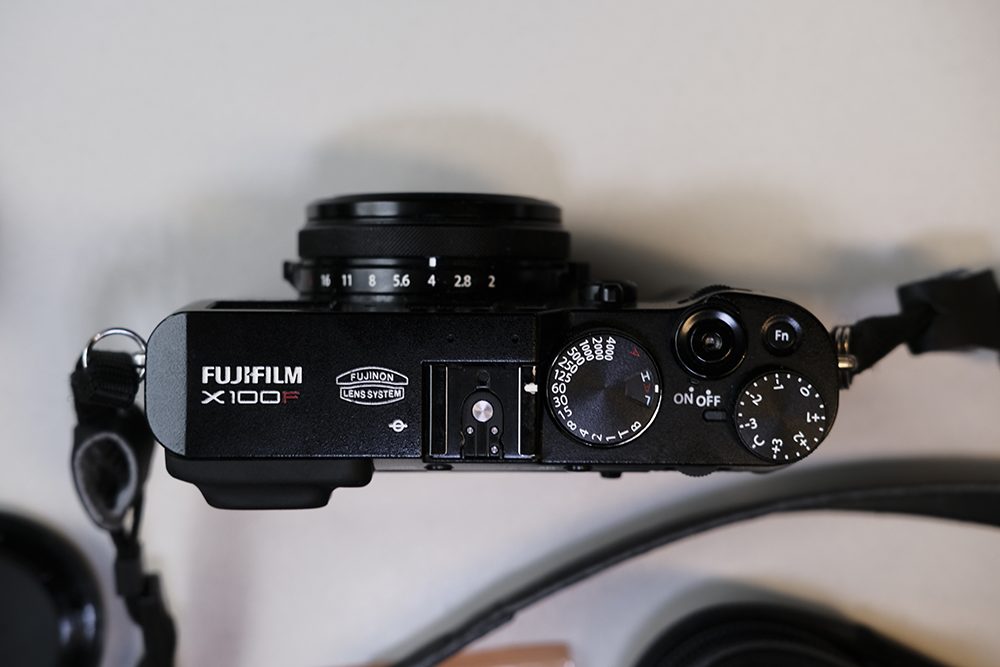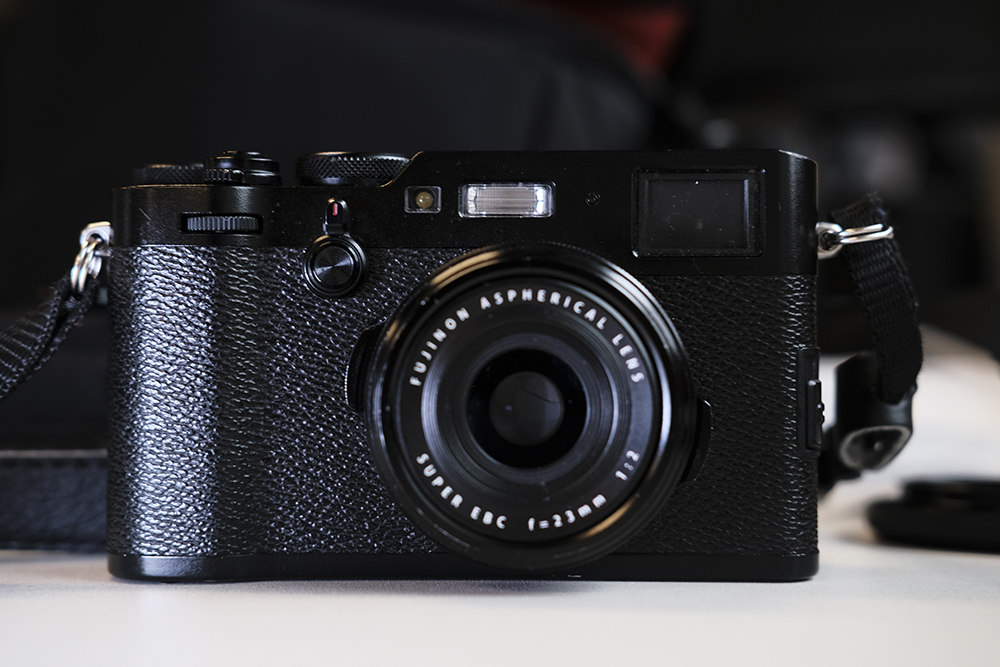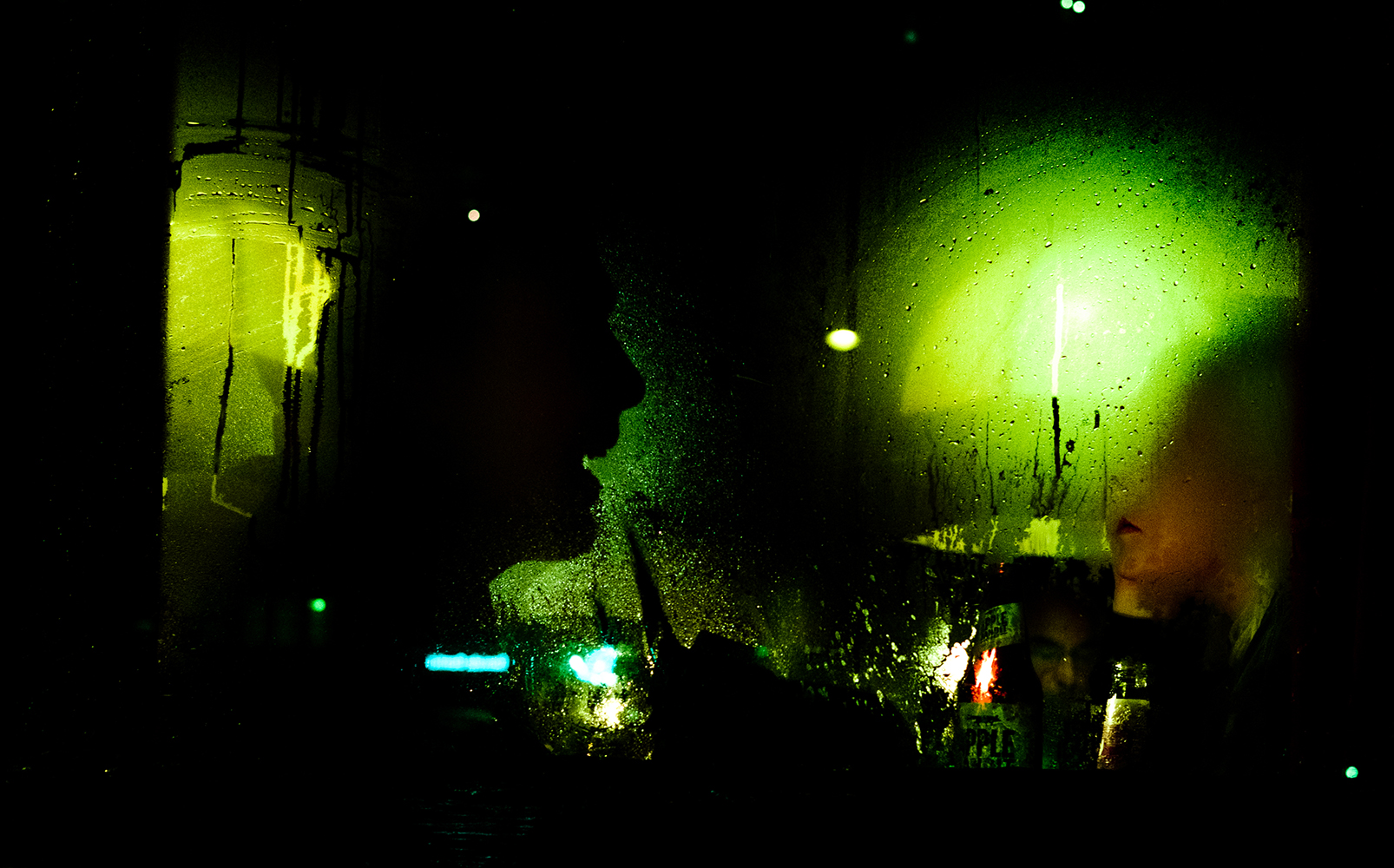
- Product
- X-T3
- Price
- $1,399.00
It’s been over half a year since Fujifilm unveiled the third iteration of its mirrorless interchangeable-lens X-T series, the X-T3.
Fujifilm was kind enough to lend me an X-T3 unit for a month in November, and I was selfish enough to ignore their emails to return it for the past two months. Yes, the X-T3 is so good I wish I could keep it forever.
Since that’s not an option, I’m here to share my experience using the X-T3 over the past three months – and why I’m already feeling nostalgic about my imminent split with it. Right off the bat, this is more of a love letter to the X-T3 than an actual review (okay, maybe I’m exaggerating a little).
But before we get into the specifics, a few words on the approach I took in this review – and a brief storytime detour.
“Do camera reviews even matter?”
After spending three years studying art theory and aesthetics, one of my biggest post-university regrets was that I never got to experiment with visual arts outside of school – or put my theoretical knowledge to the test. So in 2017 I decided to change that, and set out to buy my very first camera.
As with any other purchasing decision, I read through tons of camera reviews and specs that I barely understood; and when there were no more reviews left to peruse, I headed to YouTube and watched videos of my top-pick cameras in action. But even after all that research, I still didn’t feel comfortable settling on a final choice.
Then I came across a short, but very poignant, piece by Gigaom founder Om Malik, where he asked exactly the same question that was bugging me at the time: “do camera reviews even matter?”
“All I want to know from reviews is how it feels in hand, the pictures it makes, and what is the actual performance from a daily usage stand point,” Malik wrote. “The sensor size, the sensor type, and what kind of processors mean absolutely nothing – what matters is the photos.”
In the same piece, Malik showed an example of a review that did precisely that. The review in question focused on the X100F – the fourth iteration of Fujifilm’s fixed-lens X100 series that offers excellent image quality in a pocketable body; it was written by well-known wedding and X-photographer, Kevin Mullins.
(Please note that X-photographers are pretty much unpaid Fujifilm brand ambassadors. So take that as you will.)

What fundamentally made Mullins’s write-up on the X100F so compelling wasn’t the technical detail he provided (and there was plenty of that), but the photos he took with it. I was absolutely enamored by Mullins’s work with the X100F, I was both inspired and thoroughly terrified by his talent.
But there was one thing I was certain about: the X100F is an exceptional camera, and if I put in the effort – it could help me one day make images that inspire others the same way Mullins inspired me.
Now there’s one caveat we should voice out: although the best showcase of the capacity of a camera is the photos it produces, it also takes a good photographer in order to make the most out of the capabilities a camera gives you.
Buying a camera that delivers outstanding images won’t make you a good photographer; what it will do though is give you the tools to produce great images. But to achieve that, you will need to put in the hours, focus on your work, and hone in your vision. There’s no way around that.
After reading Mullins’s review, I ultimately went for the X100F. Though I could’ve opted for a more versatile model and picked up an interchangeable-lens camera, my experience with the X100F has convinced me I made the right call. The fixed lens made me zero in on working with what I have, and that in turn helped me become a better photographer in the long run.

This brings me to my review of the X-T3. While I’ll go over some of the tech powering the X-T3, this piece is more of a testimonial of my experience using the camera, and a demonstration of the photos I took with it, instead of a full-blown review.
I should also mention that although I’ve been covering technology for over three years now, I’m neither a technology reviewer, nor a professional photographer. I’m more of a non-photographer who occasionally takes candid photos in the streets.
Finally – and this is an important disclaimer – all photos have been edited (some pretty heavily) to my taste. For the sake of transparency, I will also include links to out-of-camera samples in the captions under each image. This should give you a better idea of the X-T3’s in-camera processing capabilities, and the post-processing flexibility you get in RAW files.
Body and design
Let me start off with this: the X-T3 is a conversation starter.
Fujifilm cameras are often inspired by the classic analog look, and the X-T3 is no different. The X-T3 has a distinct 80s feel, reminiscent of Fujifilm’s Fujica series. Indeed, I couldn’t count how many times a stranger would stop me on the street, point to the X-T3, and ask me if I’m shooting on film – or just enthusiastically nod in approval: “Cool camera!”
Not only is the X-T3’s design absolutely gorgeous, but quite functional too.
The camera sports three separate analog controls for ISO, shutter speed, and exposure compensation. While only the former two are lockable, the exposure compensation dial is pretty sturdy, so you won’t have to worry about accidentally rotating it.
There are two additional – front and rear – command dials, which can be customized to your needs. I personally use the rear dial to fine-tune the shutter speed when necessary, and the front dial to switch between different custom-range ISO auto modes.
The rear side of the camera features a joystick (which you can use to select your focus point when shooting) and a dial pad with four arrows, each of which can be customized. I personally disabled the arrow shortcuts, as I found myself accidentally clicking on them a bit too often. Still, it’s good to have options.
Unlike its X-T2 predecessor, the X-T3 also boasts a touch-enabled screen, which you can tap to focus on your subject. This was admittedly one of the changes I was most curious to test out, but I found the joystick much more reliable when it came to focusing. The 3.2-inch screen tilts up or down, as well as side to side; unfortunately for vloggers though, it doesn’t flip to the front.


I should also mention that the body is sealed against dust and moisture – and after hours of shooting in the rain, I can confirm the weather-sealing works as intended.
Inside Fujifilm’s X-T3
The X-T3 comes with Fujifilm’s new X-Trans CMOS 4 sensor and X-Processor 4 image processing engine. The company says the new tech delivers three times the processing speed of current models – and I’m willing to agree with this comparison following my trial with the camera.
The X-T3 is still an APS-C format camera, and with the latest hardware upgrade it’s easily one of the best 1.5x-crop alternatives out there.



We won’t get too deep into this, but here’s a brief specs low-down for you:
- 26.1 million pixels (up from 24.3 million pixels for the X-T2)
- Maximum resolution of 6240×4160 pixels (3:2 aspect ratio)
- New base ISO of 160 (capable of shooting RAW up to ISO 12,800)
- 425-point hybrid autofocus system
- High-resolution 3.69 million-dot electronic viewfinder (EVF)
- 4K video 10-bit video recording capabilities (30p full width, 60p at 1.18 crop)
- 11 frames per second when shooting in burst mode with mechanical shutter (20 when using the electronic shutter, and 30 when shooting at a 1.25x crop with the electronic shutter)
- Dual UHS-II SD card slots
- USB-C connector
- Dimensions: (W) 132.5mm x (H) 92.8mm x (D) 58.8mm
- Weight: 489g (excluding battery and SD memory card)
So what do all these specs mean for you? Among other things, ridiculously fast autofocus (AF) performance.


Coming from the X100F (where AF is already arguably fast), I was stunned to discover how much faster the X-T3 AF is. It’s difficult to describe the experience, but the AF was the single most impressive feature of the X-T3, at least in my book.
Indeed, the autofocus system helped me capture some moments I would’ve easily missed had I been shooting with my X100F: or put simply, it could make the difference between a great and a mediocre shot.



Fujifilm claims the AF improvements are best observed at low-light conditions, but honestly – the AF performance shines through in any scenario imaginable.
The new sensor-processor combination seems to have also brought improvements in camera IQ. Fujifilm was already known for its excellent out-of-camera JPEGs (and various built-in film simulation profiles), but this is even more visible with the X-T3.



For a more technical breakdown of the technology inside the X-T3 (or a deeper look into its video capabilities), check out DPRreview’s review – they’ve done a wonderful job of summing up both the pros and cons of the camera.
The X-T3 in action
As you might’ve already guessed, the X-T3 is an absolute delight to shoot with.
Even after weeks of using it, the X-T3 kept pleasantly surprising me with its incredibly fast and accurate AF system. This is particularly impressive when we take into account Fujifilm lenses aren’t all that fast, compared to other alternatives on the market.
Fujifilm loaned me three different lenses to play around with – XF16-55mmF2.8 R LM WR, XF23mmF2 R WR, and XF35mmF2 R WR – but I mostly shot with the 35mm prime lens (53mm equivalent). In all fairness though, the XF35mmF2 R WR is among the fastest lenses in Fujifilm’s lineup.



While it’s not exactly pocketable, the X-T3 is still lightweight enough to carry around everywhere. I mostly shoot in Amsterdam, but I also brought it along with me on my trips to London, Sofia, and Barcelona.
Thanks to its revamped sensor and processor, the X-T3 touts improved face and eye detection AF capabilities, promising to focus on moving people twice as fast in comparison to previous models.
While the face and eye detection features work fairly accurately in simple conditions, things get a little annoying when it comes to shooting complex scenes with numerous people in the frame – like street photography.
That’s also why I ended up disabling face and eye detection, and mostly used the joystick to focus on my subjects.</p>



That said, I did trust the X-T3’s metering system to choose the ISO for me. Fujifilm allows you to select up to three custom ISO auto modes, which you can further calibrate by playing around with the exposure compensation settings.
Coming from the X100F which uses Fujifilm’s older sensor and processor tech, I was impressed with the progress the company has made when it comes to light metering.


While the battery life is nothing extraordinary, I routinely managed to get over 400 images on a single charge – perhaps because I shoot in burst mode. For context, Fujifilm claims about 390 shots on a single charge in its marketing materials.
My only hitch with the X-T3 is that it did freeze on a few rare occasions. Nothing a quick reset couldn’t fix, but I noticed I lost a few frames in the process (since I almost always shoot in burst mode). The good thing is that I haven’t encountered this issue after the latest firmware update.
Ignoring these isolated hiccups, the X-T3 is a truly remarkable camera that can be a valuable tool to both professionals and casual enthusiasts alike.



So should I buy it?
If you’re in the market for a new – perhaps even your very first – n>camera, you should absolutely take the X-T3 into consideration.
At $1399 (body only), the X-T3 is not cheap by any means; however, it’s relatively affordable compared to other cameras in the same range, such as and Nikon’s D500 and Panasonic’s GH5.
If you happen to already own a camera that offers a similar performance, you might be better off hanging back until the next iteration of the X-T series; or until X-T3’s price has dropped a little.



Then there is the recently launched X-T30 which packs the same sensor and processor tech, but loses some of the X-T3’s premium features – like weather-sealing – and a few buttons.
Still, it’s a bit more compact, and significantly less pricey at $899 (or $1,299 including the XF18-55mm lens). Of course, you will have to wait a little longer for the X-T30 until it goes on sale in March.



As far as my romance with the X-T3 goes, I’m afraid I won’t be copping it for the time being. I’d be lying if I said I won’t miss toying around with it, but it’s difficult to justify dishing out over a grand for the X-T3 when my X100F still delivers comparable results (as far as still images go at least, the situation is a bit different when it comes to video).
But if I suddenly feel the need to upgrade my photography arsenal – or hop into making videos – I can say without any doubt: the X-T3 will be my absolute top pick.



Oh, and if you enjoyed browsing through the photos I took with the X-T3, feel free to follow me on Instagram for more of where that came from!
Here are a few more shots before you go though:







Get the TNW newsletter
Get the most important tech news in your inbox each week.










